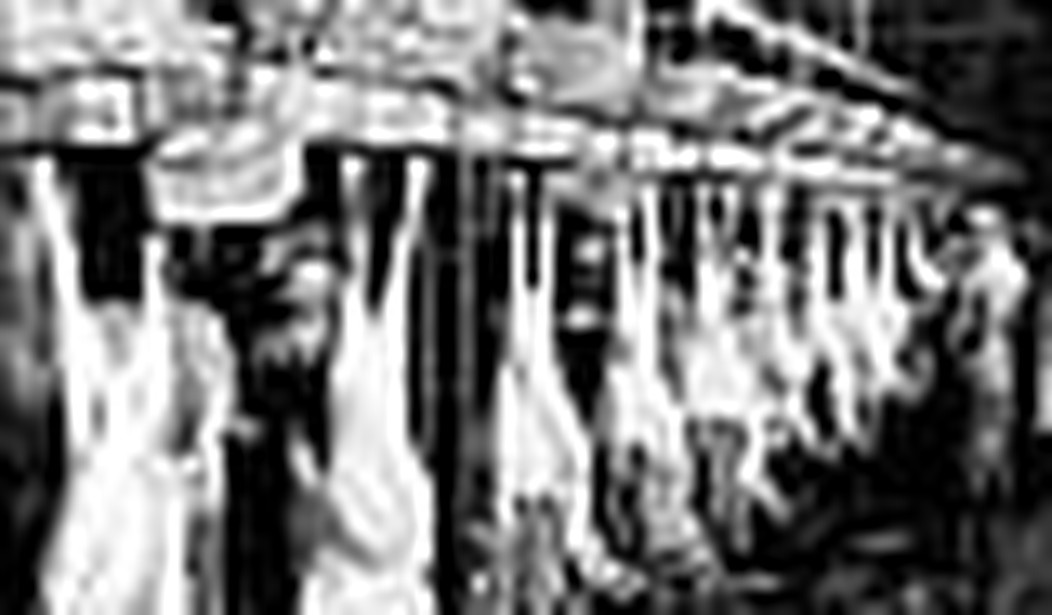If universities are biased and the media is lazy, how are we supposed to develop intelligent public policy? Food safety is a case in point.
At first glance it appears that there must be momentous news regarding food safety. Business Week blared the headline “Food-borne Illnesses in U.S. Cost $152B Annually“; the Los Angeles Times trumpeted “Cost of food-borne illnesses is deemed much higher than earlier estimates“; USA Today declared “USA pays price for food-borne illness: $152B a year.” All the noise was generated by a paper written by Robert L. Scharff for the Produce Safety Project at Georgetown University. Dr. Scharf is an assistant professor in the Department of Consumer Sciences at Ohio State University and once worked at the FDA as an economist.
The paper causing all the hullabaloo is titled “Health-Related Costs From Foodborne Illness In The United States,” and whatever the merits of the paper, the whole enterprise shows the utter collapse of both academic and journalistic standards and the difficulty this poses for the making of public policy.
A mere glance at the website of Produce Safety Project, identified as “an initiative of The Pew Charitable Trusts at Georgetown University,” shows instantly that this “project” and any standard of academic inquiry are inimical. Right on the front page of the website the purpose of the Produce Safety Project at Georgetown University is defined:
The Produce Safety Project at Georgetown University seeks the establishment by the Food and Drug Administration of mandatory and enforceable safety standards for domestic and imported fresh produce, from farm to fork.
Now I bow to nobody in my pursuit of safe produce. Four generations of my family have worked in the produce industry here in America, and I’ve built a career speaking out on food safety issues. But can I possibly be the only one who thinks that Georgetown University disgraces itself by having such an entity use its name? After all, the purpose of a university is to foster free inquiry and research, to encourage the exploration of new ideas, and to encourage people to think deeply about various subjects.
Apparently, though, free inquiry and research are no longer needed at Georgetown, as the Produce Safety Project has a priori determined that the correct policy response to food safety concerns is that the FDA should establish mandatory and enforceable safety standards. Where this leaves students or faculty members who might think differently or whose research might lead in a different direction is hard to say. There seems to be no place at Georgetown for those who might say that the USDA, rather than the FDA, should play a bigger role … or that societal resources should be invested in reducing automobile accidents rather than establishing mandatory FDA produce safety standards … or that “farm to fork” standards, presumably including “mandatory and enforceable” sanctions against consumers — that’s the fork part — are too intrusive. The thinking has already been done.
As upsetting as Georgetown’s abandonment of the spirit of free academic inquiry may be, the wholesale failure of so much of the media to report comprehensively on this paper and its publication is simply astounding.
Although most media reports credited Georgetown University with the study — ABC News, for example, identified the study as “an initiative of the Pew Charitable trusts and Georgetown University” — virtually no media outlets took the time to explain that the study was published by a self-professed advocacy center that has as its mission the enactment of specific policy goals.
As to the validity of the study, it also seems to be the case that virtually no media outlets reported that the study was not submitted to an independent journal for peer review. Although three economists are thanked in the footnotes for providing independent review — the review was obviously not anonymous — it is not clear who selected the reviewers or what their affiliations are. Also, no mention is made that one of the reviewers co-wrote a book with the author of the study.
Although many media outlets plucked out from the various cross-hatches of data items of interest to their states or industry, few seemed to have noticed that the many pages of data are based on a whole series of assumptions that may or may not be accurate. To start at the very base, are there actually 81,910,799 cases of foodborne illness in the United States, as the study claims? Perhaps, although despite laws requiring physicians to report illnesses caused by the most dangerous pathogens, the CDC can’t produce names equating to even 1% of that number.
The number used in the study is a theoretical construct based on an unproven underreporting factor. In fact, the number of foodborne illnesses is so theoretical that in almost 82% of the claimed cases of foodborne illness, or over 67 million cases, there is no known agent that caused the supposed cases of foodborne illness.
Most importantly, though the headlines of the press release, “Foodborne Illness Costs Nation $152 Billion Annually: Nearly $39 Billion Loss Attributed to Produce,” were repeated ad infinitum in media outlet after media outlet, few dug into the study to explain that these headlines don’t carry the meaning that people would typically attribute to them.
If your neighbor just got out of the hospital and you asked how he was, and he reported that he was fine but his illness cost him thirty grand, you might think that he was referring to the actual hospital bill. That he or his insurance company actually wrote a check for that amount. Maybe you would think it was the hospital bill plus lost wages. If you later found out that your neighbor included in his complaints the value of the decline in the quality of his life while he was in the hospital, you might think your neighbor a bit deceptive — or daffy.
Yet on the largest single category the author of the study identifies — those 67 million-plus people whose supposed foodborne illness is caused by unknown agents — almost 63% of the “cost” of these illnesses are due to declines in the quality of life, an enormously subjective measure. Another 30% of the “cost” of foodborne illness for these cases comes from inputting the value of $7.9 million for a “statistical life” if someone dies. Only about 7% of the so-called “cost” of foodborne illness in this large category represents actual payments made to anyone – and even that is just an estimate.
There is a food safety bill in Congress. The House has passed it and the Senate may do so. The whole purpose of releasing this study at this time is to railroad it through. It gave U.S. Representative Rosa DeLauro (D-Conn.), who is a prime backer of the bill, an opportunity to be quoted in almost every story saying that the study revealed numbers that were “shockingly high” and that she hoped “that the sobering numbers of this report will compel the Senate to act immediately.” Nobody seems interested in doing the work to see if the study’s numbers are not only “shockingly high” but also correct and meaningful.
This attitude characterizes the bill itself. The bill before the Senate increases inspections, though there is no evidence increased inspections reduce foodborne illness. It gives the FDA more authority, although it is not clear how a lack of authority ever caused a foodborne illness outbreak. It calls for better traceability, although the problem in foodborne illness incidents is typically getting the epidemiology right. It is basically a law that says since there is a problem, the solution must be to give the government lots more control and authority — with no indication that this will actually solve the problem and no consideration to private sector solutions to the problem or even that the problem is the place society should be investing right now.
There are arguments on all sides of these issues, but the sad part for our country is that neither legislators nor the citizenry can rely on information from universities or the media in trying to come to a position on the matter. Whether due to advocacy or sloth, this failure of institutions poses grave risks to the decision-making process of our country on food safety and all public policy matters.









Join the conversation as a VIP Member